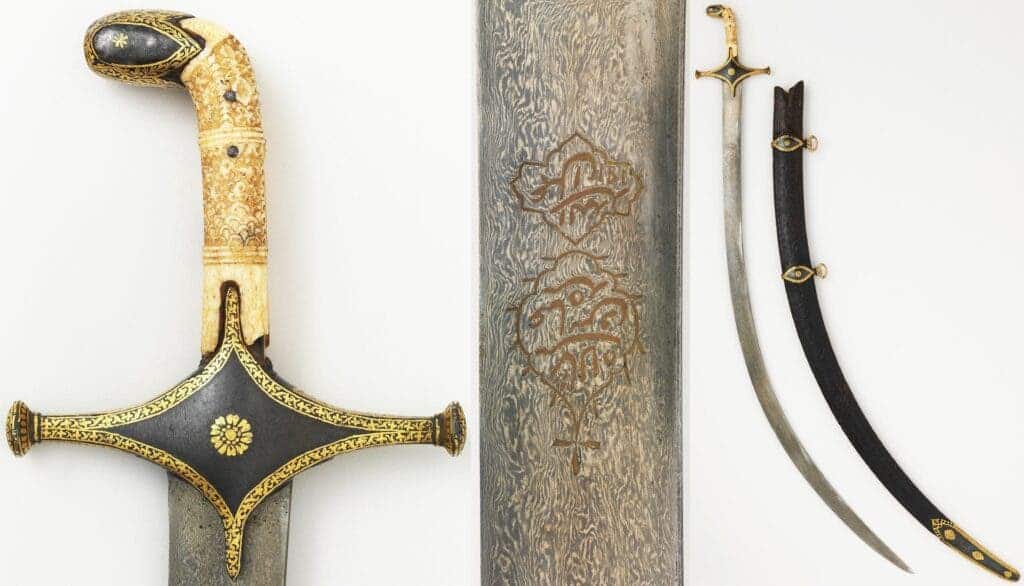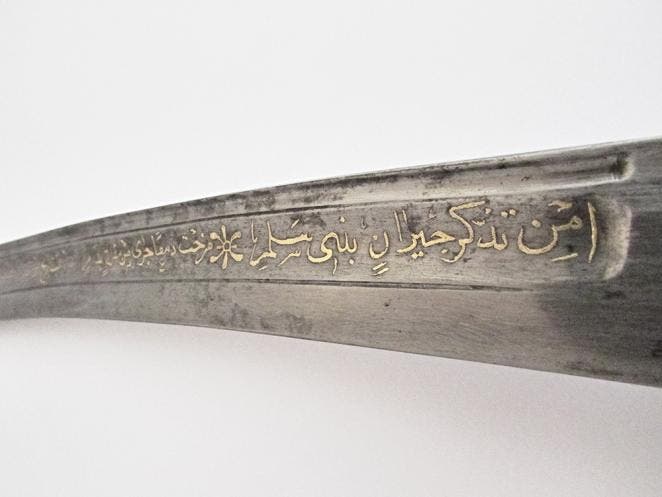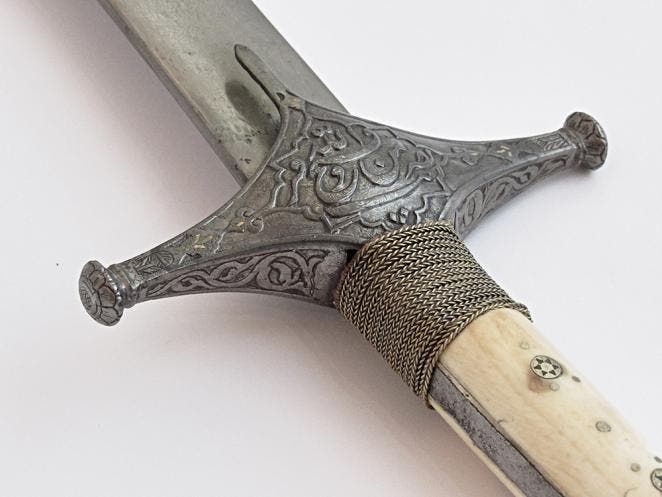
When the first Crusaders reached the Middle East in the 11th century, they were in for a shocking surprise. It wasn’t just the scorching heat, unfamiliar territory, and foreign culture that threw them off guard, but also a novel deadly weapon: sabers made from Damascus steel.
Damascus steel is incredibly strong but malleable at the same time. It’s easily recognizable due to the watery dark patterns, called “damask”, that form on the surface of the metal. When Damascus steel is hammered into a blade, its edge can stay sharp for years even after clashing through many battles.
Prized for its distinctive wavy surface, linked by poets to ant tracks or rippling water, the Damascene sword was a weapon of the highest quality. But despite their best efforts, Europeans could never replicate Damascus steel to a tee, as its manufacturing method was kept a closely guarded state secret by Middle Eastern armorers.
Reforging Damascus steel

Although the recipe for Damascus steel has been lost over the ages and we’ll probably never be able to replicate it exactly, modern analytical methods allow us to infer some of the material’s most important properties. Damascus steel’s number one requirement, for instance, is a very high carbon content.
“The art of producing the famous 16–18th century Damascus steel blades found in many museums was lost long ago,” writes lead author J.D. Verhoeven, who has studies Damascus steel.
“The date of the last blades produced with the highest-quality damascene patterns is uncertain, but is probably around 1750; it is unlikely that blades displaying low-quality damascene patterns were produced later than the early 19th century. Debate has persisted in the metallurgy community over the past 200 years as to how these blades were made and why the surface pattern appeared.”
Modern steel contains about 1% carbon, which increases the hardness and strength of the alloy. Damascus steel contains between 1% and 2% carbon, according to an analysis conducted by metallurgists at Stanford University in the 1980s.
Another key requirement was forging and hammering at a relatively low temperature of about 920 degrees Celsius (1,700 degrees Fahrenheit). After the blade is shaped, the steel is again reheated to the same temperature, then rapidly cooled by quenching it in a fluid.
It was during this quenching process that some armorers in Persia believed the blade acquired its magical properties. Legend had it that the finest Damascus blades were quenched in “dragon blood”, according to the Encyclopedia of the Sword.
What form this dragon blood took is anyone’s guess. One Pakistani man sent a letter to the Arms and Armor Division of the Metropolitan Museum of Art in New York claiming that the Damascus sword held in his family for many generations was quenched by its Afghan blacksmiths in the urine of a donkey, goat, or even a redheaded boy.

One written account from Turkey dating from eight centuries ago stressed that the Damascus sword had to be heated until it glowed “like the sun rising in the desert”. After the blade is cooled until it gains the color of royal purple, it then has to be thrust “into the body of a muscular slave” so that his vitality and strength are transferred to the sword. Oddly specific.
While these anecdotes cannot be trusted for their veracity, outrageous as they may sound, it is possible that some of these outlandish quenching techniques may have genuinely contributed to the blade’s quality. For instance, by adding nitrogen to the alloy.
However, the most important component of Damascus steel — and the reason why we’ll probably never replicate a true Damascus sword — is “wootz”, a special type of steel that used to be made in India.
Wootz, which first began production more than 2,300 years ago, is an ultra-high grade carbon steel, containing between 1% and 2% carbon. Excavations in India and Sri Lanka suggest that it was fabricated inside a crucible, a container that can be used in very hot temperatures required to melt steel. In 300 B.C., when the first Wootz steel was cast, the crucible was likely made of clay. Inside the crucible, iron was melted with charcoal with no oxygen. Under these reducing atmospheric conditions, the steel absorbed the carbon from charcoal.
When Europeans started descending onto the Indian subcontinent in great numbers in the 19th century, some scientists from England attempted to replicate the wootz manufacturing method in order to understand how steel with such extraordinary strength was made with ancient tools. In the process, they found that the high carbon content was a key requirement.
But it wasn’t until the 20th-century that scientists learned about another property of Wootz steel. Steel with such a high carbon content can become “superplastic”, which allows it to be formed into complex shapes.
According to Encyclopedia of the Sword by Nick Evangelista, a batch of wootz steel was heated until molten then bundled into sheets that were yet again heated and hammered into the rough shape of a sword. Forging the material alters the crystalline structure into the familiar waving or watered pattern that Damascus steel is known for.
After culling, the blade was filed, ground, polished, and finely decorated. The most prized Damascus swords were the ones with a series of bars crossing the blade, known as “Mohamet’s Ladder”. These fine blades were often decorated with gold or silver.
Unfortunately, the technique for making wootz was lost in the 1700s. With the source material gone, so were the Damascus swords, whose production was already exceptionally rare by the 15th century.
Despite a great deal of research and effort to reverse engineer Damascus blades, no one has been able to cast a material that is close to the ancient quality. That’s despite what you might find on Amazon. Those are Damascus sword ripoffs made from pattern-welded steel that has been merely etched with acid in order to mimic the watery light/dark patterns.
Still, some reasearchers are making genuine progress in understanding Damascus steel. For instance, J.D. Verhoeven and L.L. Jones, who published a scientific paper on it, found that the interplay between phosphorous and cementite and heat may be responsible for the unique properties of the material — and impurities could actually be helpful.
“Experiments on small steel castings with impurity compositions matching that of Damascus steels reveal that the phosphorous impurity content produces two significant effects: 1) it results in formation of primary cementite that could lead to the damask pattern of the final sword; and 2) it causes a graphitization of cementite on certain heat-treat cycles, which destroys the damask pattern.


